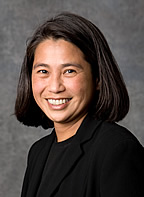Sustaining Designed-In Sustainability
Alumna with Own Design Firm to Address Issue Feb. 7
February 4, 2008
by Russ Hudson
Designing and constructing a building to be green and sustainable doesn’t always help very much … but not because it isn’t a good idea.
“Sustaining Sustainability: What Happens After a Sustainable Building Handover” will be discussed at a 7:30 a.m. Thursday, Feb. 7, Technology Breakfast at the Fullerton Marriott at California State University.
“The people who move into a building, whether it is a residential or a business building, often undo what was designed into the building to save power, water, maintenance, all of that. We have to find a way to keep a sustainability building green and sustainable,” said keynote speaker and alumna Caecilia Gotama (B.S. engineering-mechanical ’82, M.S. engineering-mechanical '87), the principle of Gotama Building Engineers, Inc., in Marina del Rey.
“For example, we design the building, the builder approves it and it is built with California-native plants, which use far less water and take far less maintenance,” Gotama explained. “Then we come back a year later and the residents or maintenance people have replaced the native plants with lush, water-hungry, high-maintenance vegetation.
“We will place an awning over a key area to keep it cool so the building requires less air conditioning, then the awning will be taken down and the air conditioning has to run more.
“The goal now is persuading the people who use the building, and those who maintain the building, to understand and buy into why the building was designed as it was. In the public sector, that is already happening more and more, like on university campuses. Not so much in the private sector, where the interest leans more toward a quick turnover. That can mean giving tenants what they’re used to rather than what actually works best.”
It is a mindset, said the designer, adding that many homes, apartment buildings and business buildings in Phoenix, Scottsdale and Paradise Valley simply let native vegetation grow up to the buildings, with no attempts at manicured lawns and lush shrubbery.
“To them, it seems perfectly normal. It’s all in what you’re used to and accept. We are working on ways to persuade Southern Californians of the same kind of thing,” said Gotama.
The Technology Breakfast is one of a series of events sponsored by Cal State Fullerton’s College of Engineering and Computer Science for Engineering and Computer Science Affiliates. For more information, call Robin Rawal at 278-3362 or e-mail rrawal@fullerton.edu.

